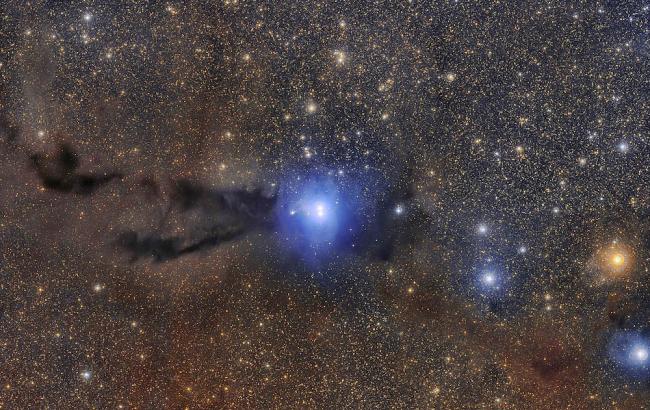
An image of the star-forming region in the constellation of Lupus. Astronomers analyzing decades of observations of molecular gas in these kinds of young clouds have concluded that the data used to generalize their physical state was often contaminated by extraneous molecular gas in the field of view but not physically associated.
Nearly forty years ago, as he thought about the dramatic new millimeter wavelength observations of gas in star-forming molecular clouds and their newly derived masses and motions, Gary Larson realized a few basic principles seemed to be at work. Larger clouds showed a wider range of motions, the motions implied that the kinetic energies were roughly balanced (in equilibrium) with the gravitational energies so that the clouds held together, and smaller clouds hosted denser gas. Combined, these observations could be explained by the straightforward roles of gravity and gravity driven turbulence. These principles have guided studies of star formation in the decades since, but recent measurements have begun to highlight situations in which they do not quite apply.
CfA astronomer Maria Jimenez-Donaire and her colleagues reconsider the data on carbon monoxide (CO) emission from molecular clouds in the Milky Way, CO being the most abundant and frequently used species, and test them using models with some slightly alternative relationships. They conclude that the differences between the ideal Larson behaviors of molecular clouds and the observed ones can often be attributed to the presence of CO emission along the line-of-sight from clouds that are not related to the primary source. In the case of dense cores, they argue that an additional complication could come from selection effects that preferentially pick out conventional cores. Among their most significant conclusions is that clouds satisfying the Larson conditions are not necessarily in equilibrium. As a result, an accurate analysis of a cloud requires a detailed understanding of its structure.
"What Is the Physics behind the Larson Mass–Size Relation?," J. Ballesteros-Paredes, C. Román-Zúñiga, Q. Salomé, M. Zamora-Avilés, M.J. Jiménez-Donaire, MNRAS 490, 2648, 2019.